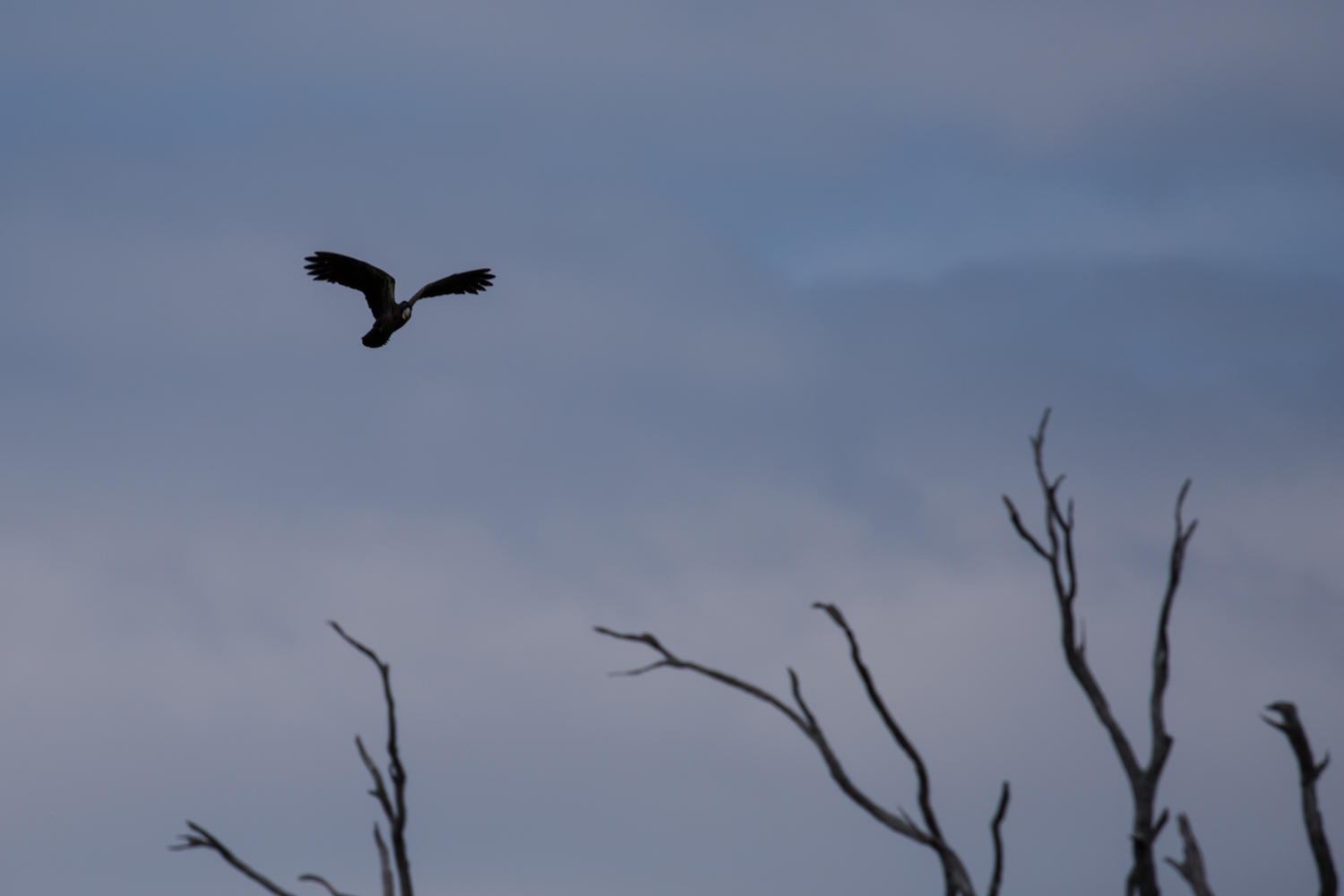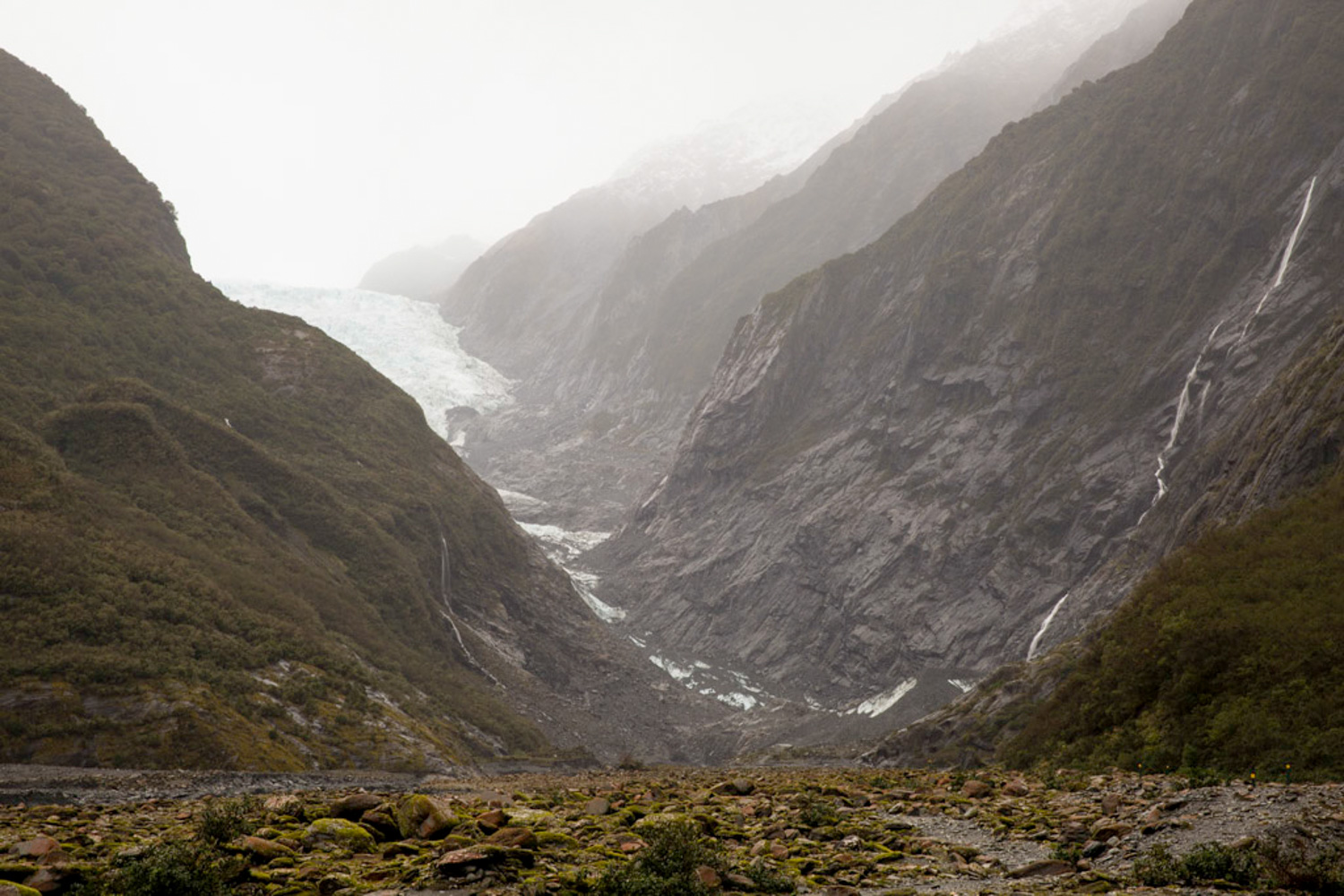
This female red-tailed black-cockatoo is returning to her nest in the late afternoon, where her newly hatched chick waits for food. The south-eastern subspecies of red-tailed black-cockatoo, Calyptorhynchus banksii graptogyne, is one of Australia's most endangered parrots. Its population numbers no more than 1500 birds, all of whom occur in an isolated area of south-west Victoria and south-east South Australia.
Victoria, Australia

This dead river red gum is a nest tree of the endangered south-eastern red-tailed black-cockatoo. Trees this size can have several hollows that are large enough for cockatoos, although plenty of other birds and mammals use the hollows too. It is critically important that these large, dead trees are protected, as they provide the most important nesting habitat for the red-tailed black-cockatoo that we know of.
Victoria, Australia

This fence surrounds Epping Forest National Park in central Queensland, attempt to exclude predators from interacting with the critically endangered northern hairy-nosed wombat, Lasiorhinus krefftii. Epping contains the last fragments of this species, which was once widespread across central-eastern Australia. An insurance population was created in 2009 in another park in southern Queensland.
Epping Forest National Park, Queensland, Australia

Introduced for cattle grazing, buffel grass is a highly invasive plant taking over large areas of Australia. It outcompetes native species, increases biomass and fuels large, hot bushfires.
Central Queensland, Australia.

We visited Fox and Franz Josef glaciers in western New Zealand. Along the track are signs showing the glacier's position in previous years. I was shocked by how quickly it had retreated to the position that we saw it at. A powerful and pertinent display of climate change in action.
Franz Josef glacier, New Zealand

From one small park in one small African country, 20,000 snares were removed. As the sign says, these snares outnumber the all of the ungulates present in the whole country, which is shocking on its own.
Swaziland.

Life is tough for the just-hatched sea turtle. After digging their way from the nest, they have to scramble across the beach and rocks to find their way to the sea. Predators like seagulls and reef sharks are waiting. It's estimated that only 1 in 1000 sea turtles survive to maturity.
Heron Island, Australia.

Sea turtles navigate to the sea using light cues. In the past this strategy served them well, as the sun or the moon on the water would be an reliable light cue to follow. Today, unfortunately, turtles get confused by artificial light from humans. In some areas they frequently travel inland instead of the to the water.
Heron Island, Australia.

Sea cages grow seafood for human consumption, alongside an overwater community in Thailand. Many reefs have been severely overfished, meaning that people have now turned to fish farming as an alternative method of securing seafood.
Thailand.









This female red-tailed black-cockatoo is returning to her nest in the late afternoon, where her newly hatched chick waits for food. The south-eastern subspecies of red-tailed black-cockatoo, Calyptorhynchus banksii graptogyne, is one of Australia's most endangered parrots. Its population numbers no more than 1500 birds, all of whom occur in an isolated area of south-west Victoria and south-east South Australia.
Victoria, Australia
This dead river red gum is a nest tree of the endangered south-eastern red-tailed black-cockatoo. Trees this size can have several hollows that are large enough for cockatoos, although plenty of other birds and mammals use the hollows too. It is critically important that these large, dead trees are protected, as they provide the most important nesting habitat for the red-tailed black-cockatoo that we know of.
Victoria, Australia
This fence surrounds Epping Forest National Park in central Queensland, attempt to exclude predators from interacting with the critically endangered northern hairy-nosed wombat, Lasiorhinus krefftii. Epping contains the last fragments of this species, which was once widespread across central-eastern Australia. An insurance population was created in 2009 in another park in southern Queensland.
Epping Forest National Park, Queensland, Australia
Introduced for cattle grazing, buffel grass is a highly invasive plant taking over large areas of Australia. It outcompetes native species, increases biomass and fuels large, hot bushfires.
Central Queensland, Australia.
We visited Fox and Franz Josef glaciers in western New Zealand. Along the track are signs showing the glacier's position in previous years. I was shocked by how quickly it had retreated to the position that we saw it at. A powerful and pertinent display of climate change in action.
Franz Josef glacier, New Zealand
From one small park in one small African country, 20,000 snares were removed. As the sign says, these snares outnumber the all of the ungulates present in the whole country, which is shocking on its own.
Swaziland.
Life is tough for the just-hatched sea turtle. After digging their way from the nest, they have to scramble across the beach and rocks to find their way to the sea. Predators like seagulls and reef sharks are waiting. It's estimated that only 1 in 1000 sea turtles survive to maturity.
Heron Island, Australia.
Sea turtles navigate to the sea using light cues. In the past this strategy served them well, as the sun or the moon on the water would be an reliable light cue to follow. Today, unfortunately, turtles get confused by artificial light from humans. In some areas they frequently travel inland instead of the to the water.
Heron Island, Australia.
Sea cages grow seafood for human consumption, alongside an overwater community in Thailand. Many reefs have been severely overfished, meaning that people have now turned to fish farming as an alternative method of securing seafood.
Thailand.